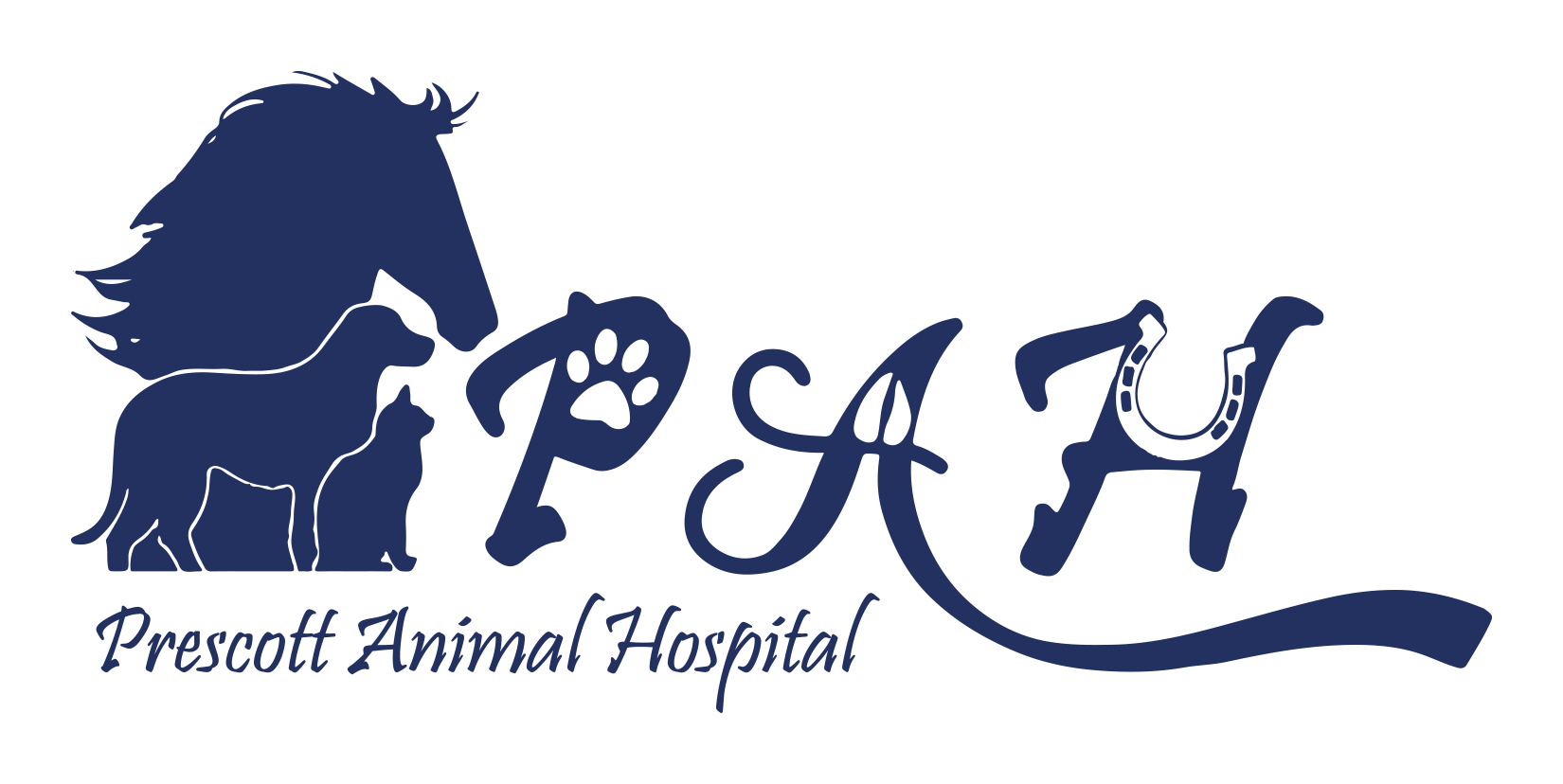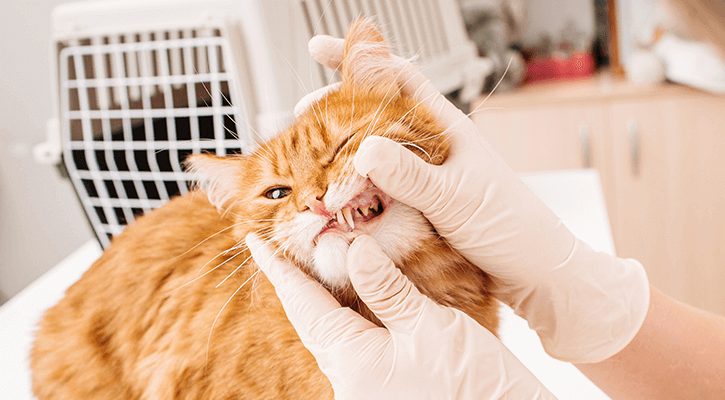
Dental Care
Periodontal disease (dental disease) is the destruction of bone, gum tissue and structures that hold the teeth in place. This disease is caused by bacterial infection that spreads underneath the gum line. Significant damage is already done by the time there are obvious signs of periodontal disease, such as bad breath, painful and loose teeth. Dogs and cats in the advanced stages of periodontal disease often require oral surgery to extract many teeth. This disease can also affect the overall health of your pet, including heart, liver and kidneys.
People understand the importance of dental care and routinely have their teeth cleaned. With our pets, dental care is a less common practice. Studies by the American Animal Hospital Association (AAHA) reveal that nearly two-thirds of pet owners do not provide the dental care recommended by veterinarians.
Prescott Animal Hospital is striving to educate our community on the necessity of pet dental care, and know the importance of providing teeth cleaning services to both dogs and cats in the Prescott area.
Signs of Pet Dental Disease
- Bad breath
It is a common misconception for bad breath to be chalked up to just “dog breath.” Bad breath is a sign of infection and disease, and can be present in both dogs and cats. Periodontal disease hides under the gum line and is not visible until severe damage has occurred. This disease can also affect the overall health of your pet, including heart, liver and kidneys. If your pet has bad breath, it is a sign that you should bring your pet in for an examination and dental cleaning. Sometimes it is possible to think our pet has bad breath, but the odor could be coming from something other than the mouth. Odors can come from the skin, ears, digestive tract and more. This is another reason why it is important for a complete examination with a veterinarian prior to a dental cleaning. - Discomfort or pain while chewing
- Decreased appetite
- Pawing at the mouth
- Visible plaque build up on the teeth
- Red and swollen gums
- Bleeding from the gums
- Loose or missing teeth
If you notice any of these signs, it is important to have your pet examined by a veterinarian. Dental disease can affect the overall health of your pet and is not something that should be addressed as soon as possible by a dog or cat dentist.
Pet Dental Cleaning
What is included in a cleaning?
It is common for pet owners to only be able to judge medical services for their pets based off a price. Many owners do not know the correct questions to ask to be sure their pet is receiving the best care possible. We want to educate pet owners on what is involved when choosing to have us perform your pet’s dental cleaning that way decisions do not have to be based on cost of services alone.
Examination

Pet dental care starts with an oral examination by the veterinarian. Not only will this allow the veterinarian to obtain a general idea of the condition of your pet’s mouth, but allow owners to ask questions and learn more about the importance of dental care.
Blood work
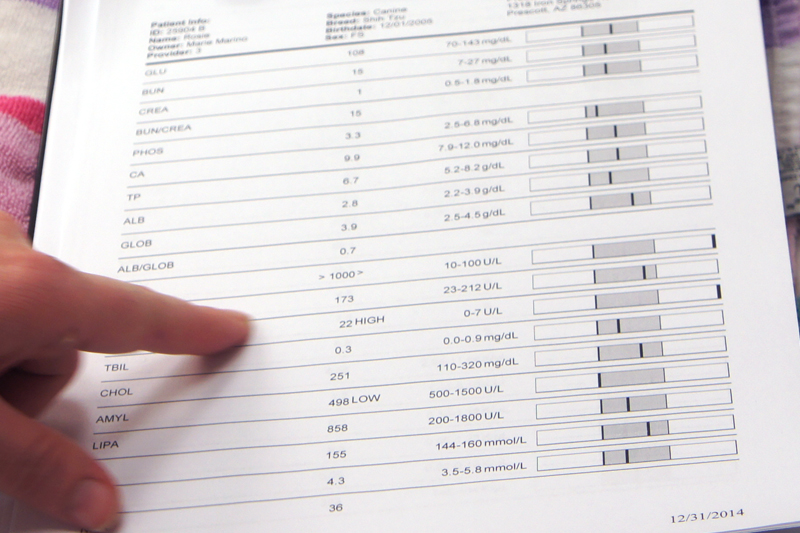
Prior to any anesthetic procedure, laboratory work will be recommended to evaluate your pet’s internal organ function and identify any potential problems that the veterinarian needs to be aware of and determine if your pet is able to undergo anesthesia.
Anesthesia monitoring
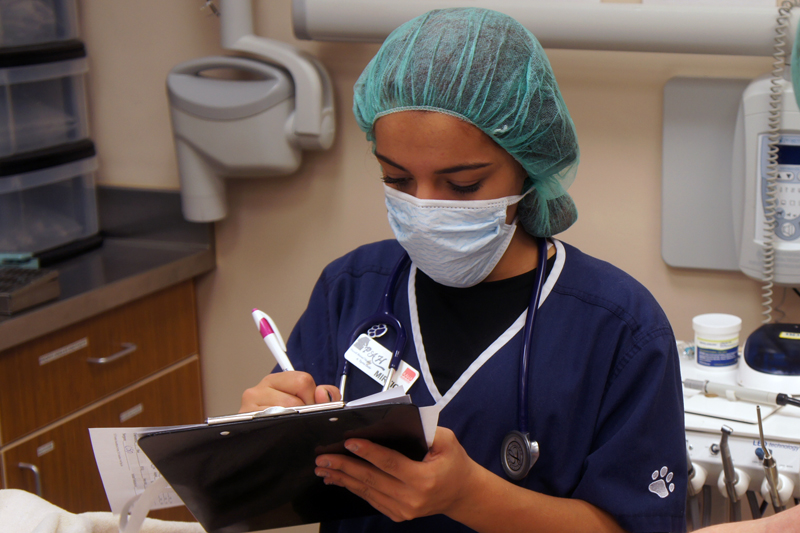
All patients under anesthesia are monitored by a trained veterinary assistant. The assistant will monitor blood pressure, blood oxygen saturation, end tidal carbon dioxide, electrocardiogram, respiratory and body temperature. All patients are kept warm with warming blankets.
IV fluids
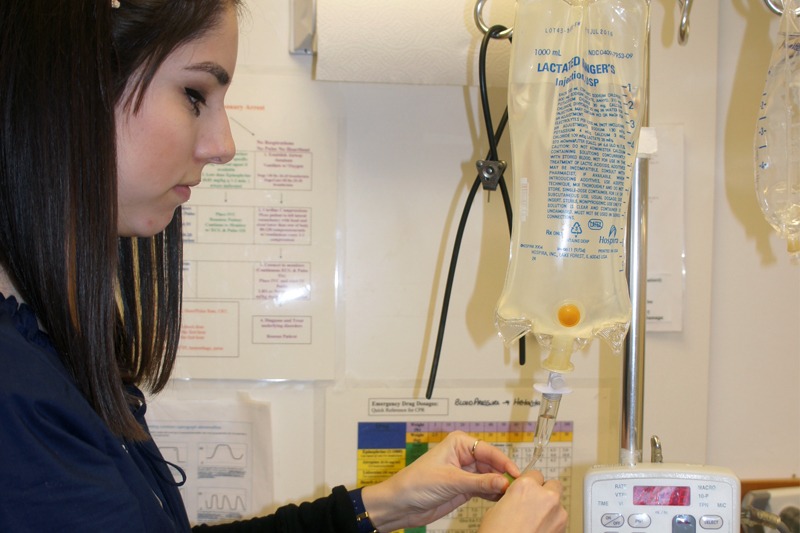
Intravenous (IV) fluids are administered to all patients under anesthesia. IV fluids help maintain blood pressure as well as provide IV access for additional medications if they are required during the procedure.
Dental x-rays
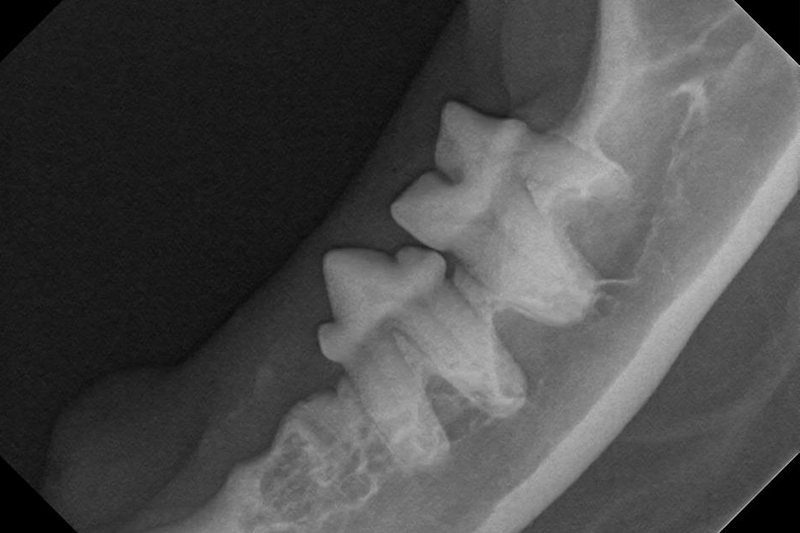
Dental radiographs are one of the most important diagnostic tools available to a veterinary dentist. They allow the internal anatomy of the teeth, the roots and the bone that surrounds the roots to be examined. It is common for a patient referred for one specific problem to have additional oral problems – these may only become apparent if full-mouth radiographs are made. Full-mouth radiographs also establish a base-line for future comparison.
Oral surgery
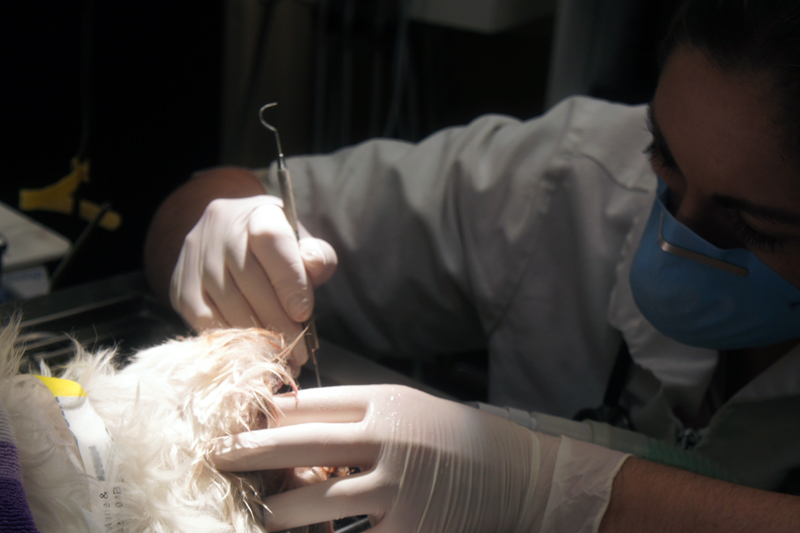
Oral surgery can be gingival hyperplasia to tooth extractions that require suturing to close. Hyperplasia is overgrowth of the gum tissue. Either surgery or laser is required to correct the overgrowth of the gum tissue. Tooth extractions that may be required is separate from the dental cleaning. After the tooth is extracted, the opening on the gum line will need to be sutured and may often require additional medication and treatment after the procedure, such as pain medication or antibiotics.
Cleaning

A full cleaning under the gum line will be performed, which is impossible to clean with the pet awake. The gum line is where the bacteria that causes periodontal disease lives. After the gum line has been cleaned, your pets teeth will be scaled (scraped) and polished. Scaling removes the plaque build up and polishing the teeth leaves a smooth surface on the tooth. Without being polished, the teeth are left with groves on the surface, allowing bacterial plaque to build up quicker.
Recovery
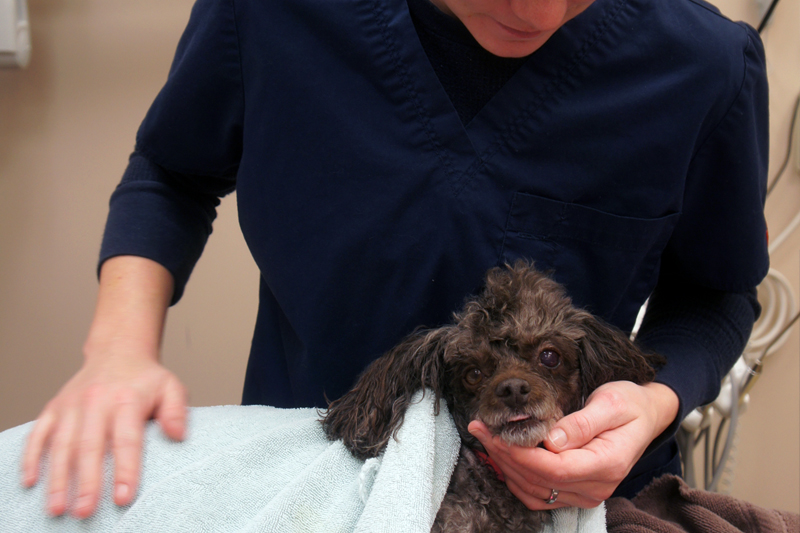
Your pet is monitored until they are recovered from anesthesia. Your pet will be able to go home the same day of the cleaning and will be able to eat and return to normal activities.
Why Anesthesia?
Why is anesthesia needed for a pet dental cleaning?
Many pet owners are nervous about their pets going under anesthesia, but the risk is lower than the health risks of improper dental care. You may have heard about anesthesia free dental cleanings and while it seems like a good idea, a thorough dental cleaning for your pet requires general anesthesia. An anesthesia free dental cleaning is using an instrument to scale (scrape) your pets teeth
Without anesthesia, your pet must be physically restrained.
When visiting the dentist, people understand what is going on and are able to communicate with the hygienist if they are uncomfortable or in pain. Our pets are not able to tell us if they are experiencing any pain or discomfort. While some pets tolerate restraint well, your pet is still being restrained for a lengthy period of time with no ability to understand why or what is happening to them.
Without anesthesia, your pets teeth are scaled to remove plaque on the visible part of the tooth, making the teeth appear whiter. During an anesthetic dental cleaning, your pets teeth will be polished after the scaling. Without being polished, the teeth are left with groves on the surface, allowing bacterial plaque to build up quicker. Having white teeth does not mean your pet is free from disease and does nothing to remove bacteria beneath the gum line.
Without anesthesia, it is impossible to clean your pet’s gum line. Periodontal disease is the destruction of bone, gum tissue and structures that hold the teeth in place. This disease is caused by bacterial infection that spreads underneath the gum line. Significant damage is already done by the time there are obvious signs of periodontal disease, such as bad breath, painful and loose teeth. Dogs and cats in the advanced stages of periodontal disease often require oral surgery to extract many teeth. This disease can also affect the overall health of your pet, including heart, liver and kidneys.
Pet Dental Costs
How much does a pet dental cost?
At Prescott Animal Hospital, it is our goal to educate our community on the importance of routine dental care, before it is a serious problem and oral surgery is required. We understand that pet owners are often surprised about the cost of recommended veterinary services and dental care is no exception. We do not want owners to choose care for their pet based strictly on price; we want them to choose based on the value and quality of care their pet is receiving. Our recommendations include what we feel is in the best health and safety interest of the patient.
We believe each patient is unique and we treat each patient based on their individual needs; we do not have a “one size fits all” dental plan. It is not our policy to provide treatment plans (estimates) over the phone. It is not possible to determine the total situation without seeing the patient, including an exam and reviewing the full medical history. This is the same as your own dentist as they cannot provide a diagnosis, recommendations or a treatment plan over the phone.
Providing routine dental care prior to needing oral surgery, is important not only to help with financial costs, but it is important for the patient’s health. Dental disease can affect the overall health of your pet, including heart, liver and kidneys.
AAHA Standards of Care
Being accredited by the American Animal Hospital Association (AAHA), we adhere to the highest standards of medical care, including anesthesia protocols and dental recommendations.
AAHA’s Dental Guidelines for Dogs and Cats recommend regular exams and dental cleanings for all adult dogs and cats.
Home Pet Dental Care
Prevention is the best medicine. Dental care does not end after a cleaning with your pets veterinarian, it is important to continue oral care at home until your pets next annual cleaning. Brushing your pet’s teeth is important, but it is not a substitute for regular dental cleanings.
Schedule An Appointment With An Animal Dentist Near You
To Make an Appointment for a dental exam or cleaning with one of our animal dentists in Prescott, AZ, call us at (928) 445-2190.
